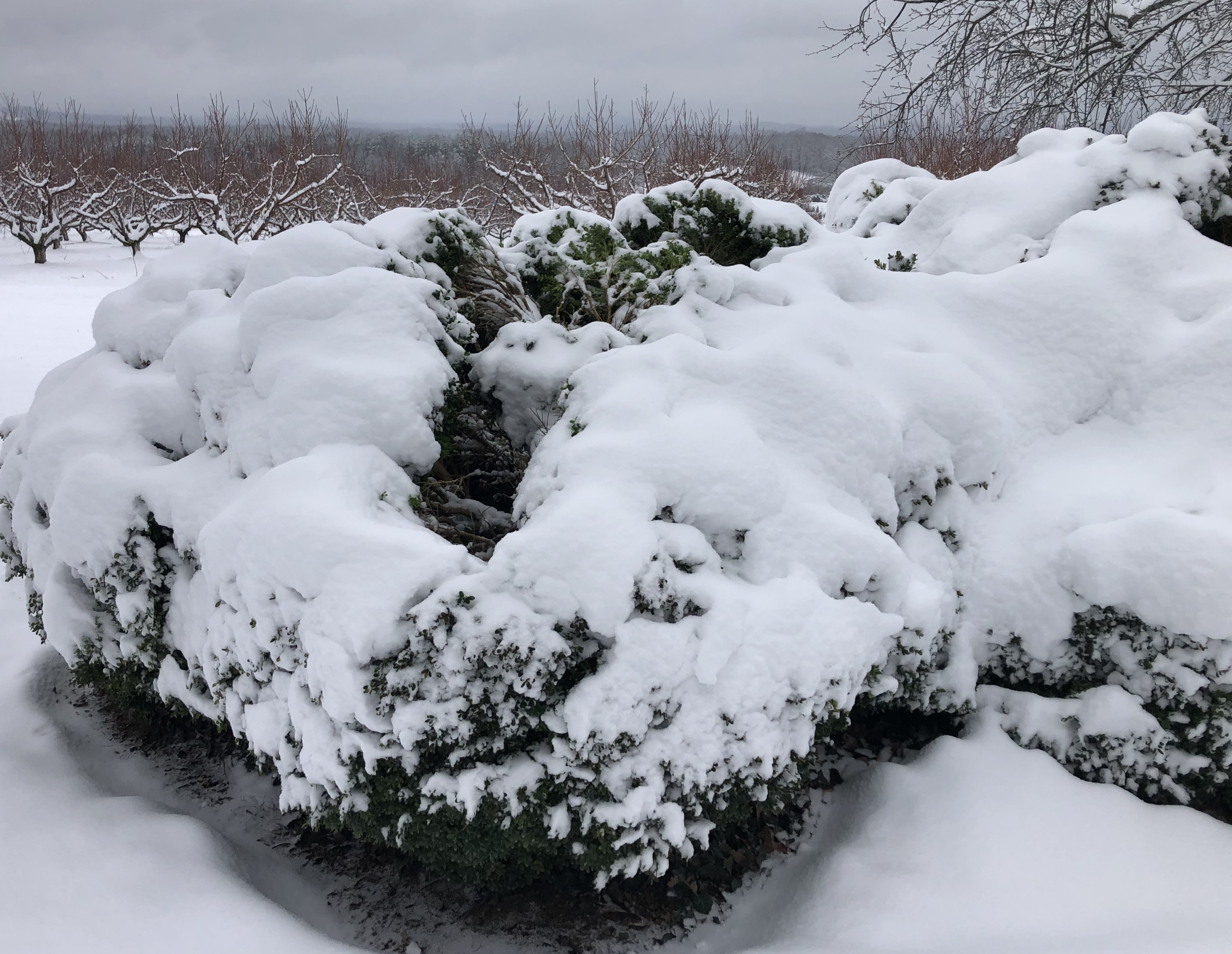Author: Holly Scoggins, Program Manager
Many of us experienced a relatively warm late fall and early winter. Late December in my own Southwest Virginia garden (Zone 6b, 2100’ elevation) saw some perennials emerging that had no business even peeping until early spring, plus a bit of new growth on some evergreens. Then blammo! Temperatures dropped dramatically, winds increased, snow and ice became the norm for January, and the first half of February hasn’t been much better. What an excellent time to review a few common winter issues for boxwood! Note that as with most things Buxus, susceptibility to abiotic or biotic issues is usually species- or cultivar-specific. Start with cultivars that are cold-hardy in your geographic region – check tags and other resources as to USDA cold hardiness zone. Here are a few of those frequently asked questions.
FAQ #1: What’s up with the cream/tan/straw-colored foliage at the tips of branches?
New growth can be susceptible to cold damage, resulting in bleached or desiccated foliage.
Chances are this was new growth that hadn’t had the chance to harden off. The same damage can occur on fresh growth in spring that gets hit by a late freeze. Gradual acclimatization to cold (and then to warm) is ideal but doesn’t always happen. And as with many woody plants, don’t encourage late-season growth. Fertilizer applications and pruning in late summer and early fall can stimulate fresh foliage that is susceptible to damage. Be sure landscape or nursery plants are well-watered going into an extreme cold spell to limit desiccation. While this bleached foliage is unattractive, rarely is the health of the plant compromised. Simply snip off damaged foliage and twig tips in spring.
FAQ #2 Should I remove the ice and/or snow weighing down the branches?
Buxus sempervirens branches can bend under the weight of significant snowfall.
Nothing insulates and protects hardy plants better than a nice blanket of snow. However, rarely is the snow deep enough to completely cover shrubs. The weight of snow and ice over exterior branches can cause them to snap or split. The chance for damage is exacerbated by whacking at the wintery build-up with a broom or shovel – a too-common practice. Let it melt naturally if possible. If additional snow and/or ice is expected to the point of concern for breakage under the load, remove by gently shaking or brushing with gloved hands.
FAQ #3: Why is my boxwood foliage bronze/orange in winter?
Bronzing happens!
“Bronzing” is the boxwood term for the appearance of purple-to-orange anthocyanin pigments that can occur in winter. The discoloration can affect one side, the whole plant, or just the tips. Bronzing is much more likely to occur on boxwood planted in full sun, especially with southwestern exposure. The pigment change is not harmful to the plant, as the foliage greens up in the spring – but you may consider a shadier or more appropriate site for that specimen. Again, susceptibility to bronzing is a bit cultivar-specific. If the aesthetics of bronzing are an issue and your boxwood will be sited in full sun, pick a cultivar shown to be less prone to the condition.
For a list of cultivars and much more information on winter care of boxwood – visit the NewGen® Boxwood site https://www.NewGen®boxwood.com/boxwood-care#winter














